
Changing the Screen
Overview
The reproducibility of an image is significantly dependent on the screen. Select a screen suitable for the required image quality.
Meaning and Purpose of Screens
This machine draws images using screens (halftone dots), and therefore the expressions for images can change with the screen type.
If an image is difficult to reproduce using the current screen (or auto selection), it is important to select the appropriate screen. When printing, there are three screen types to choose from: Screen1/Screen2/Stochastic. However, the screen assigned to each screen type can only be set by the administrator from the Administrator Setting menu.
This section introduces how to assign a screen to a screen type and how to select a screen for printing.
Tips
There are two screen types: dot screen and stochastic screen, which are defined according to their shapes and expressions. Multiple screens with different dot/line count are available for each type.

Screen Types and Their Characteristics:
Screen Type | Characteristics | Selection Group |
|---|---|---|
Dot screen | Uses dots to reproduce an image. Commonly used in offset printers. | Screen 1 / Screen 2 |
Stochastic | Reproduces images with fine non-periodic dot arrangement using the error diffusion method. This method is suitable for reproducing text originals sharply. | Stochastic |
When to perform
When an image is difficult to reproduce using the current screen (or auto selection)
Intended Environment
Operating system | Windows 7 |
Application | Adobe Acrobat Reader DC |
Image Controller | Built-in image controller |
Printer driver | PS Plug-in driver |
* The sample screen may be different from the actual display depending on your system environment and application version/revision.
Workflow
The screen can be changed via the machine's touch panel and the printer driver.
Assigning a Screen from the Machine (Custom Screen)
Changing the Screen from the Printer Driver
Assigning a Screen from the Machine (Custom Screen)
Using the touch panel on the machine, assign screens from the Administrator Setting menu.
Press Utility/Counter on the machine's control panel.
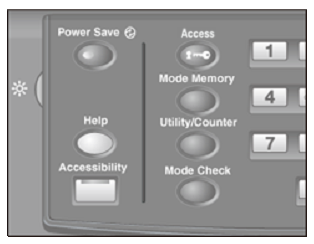
The Utility Menu is displayed.
Press Administrator Setting.

Press System Setting.
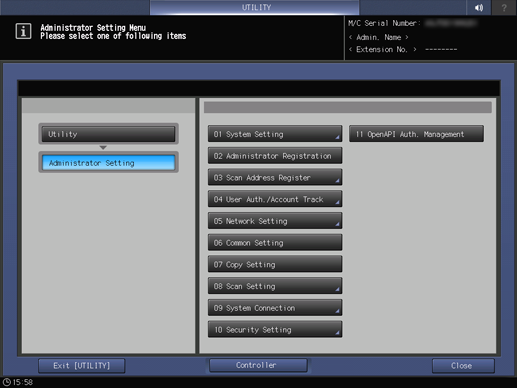
Press Expert Adjustment.

Press Quality Adjustment.

Press Custom Screen.
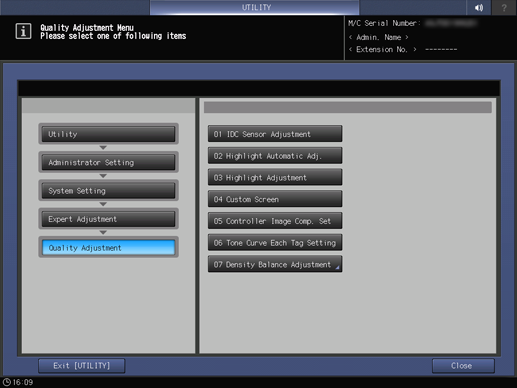
Press the screen to be assigned to each screen type: Screen1, Screen2, and Stochastic. After setting, press OK.
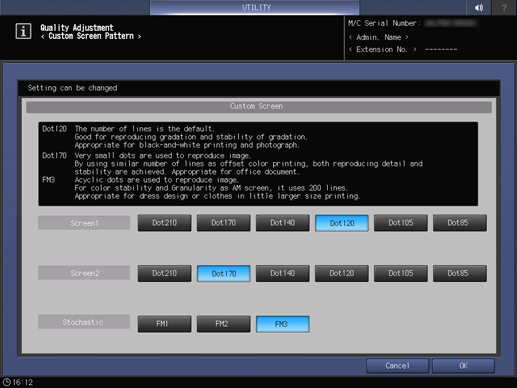
Changing the Screen from the Printer Driver
The user can change the screen via the printer driver when printing.
Open the original data with the application, and then click Print on the File menu.
The Print screen is displayed differently depending on the application used.
If there is no File menu, click the Print the file button.
Select the printer to use for printing and click Properties.

Click the Imaging tab and select the screen for Image under Fixed Screen.
Example: The following shows an example of a default screen. The selectable screen types can be changed by the administrator from the UTILITY menu. The available screen types may also vary depending on the image controller.
Screen 1 (Dot120): The number of lines is the default. Good for reproducing gradation and stability of gradation. Appropriate for black-and-white printing and photograph.
Screen 2 (Dot170): Very small dots are used to reproduce image. By using similar number of lines as offset color printing, both reproducing detail and stability are achieved. Appropriate for office document.
Stochastic (FM3): Acyclic dots are used to reproduce image. For color stability and Granularity as AM screen, it uses 200 lines. Appropriate for dress design or clothes in little larger size printing.
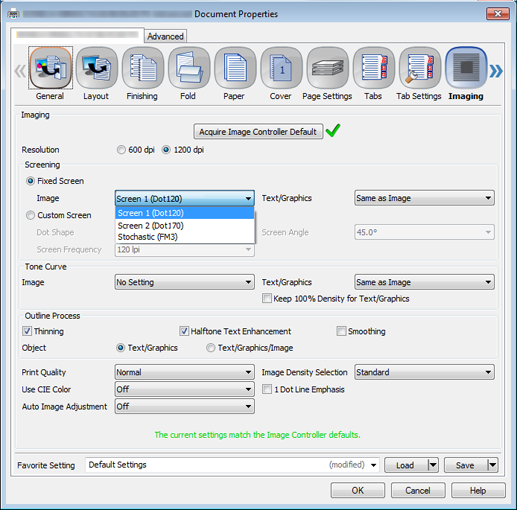
supplementary explanationSelecting Custom Screen allows you to access advanced settings: dot shape, screen line count, and screen angle. (Refer to Custom Screen.)
Select a screen for Text/Graphics, and click OK.
To use the same screen that is used for Image, select Same as Image.
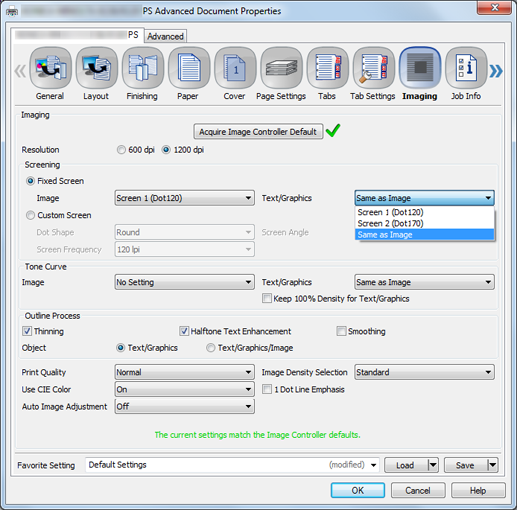
Click Print on the Print screen.

The original is printed using the selected screen.